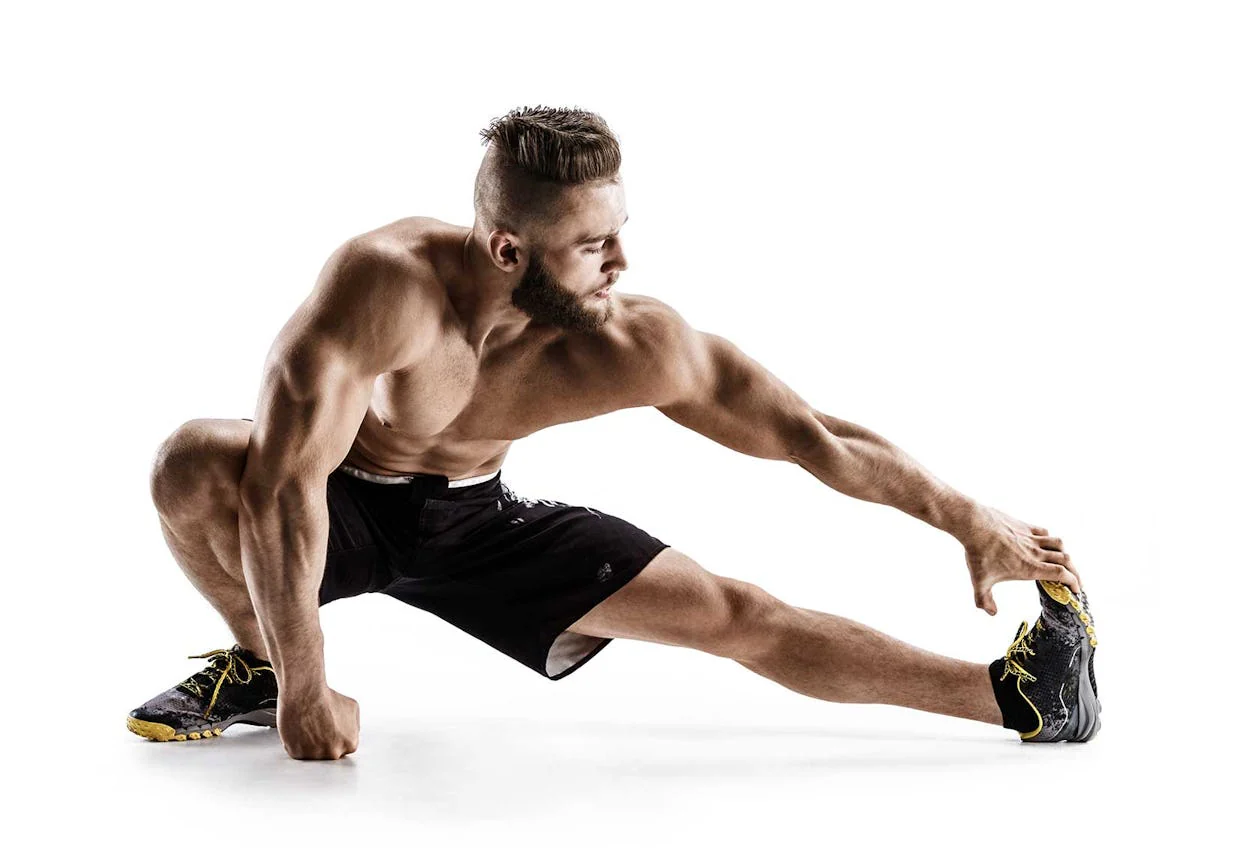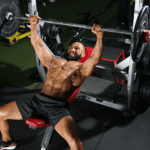The hamstrings are a group of muscles located at the back of the thigh, playing a vital role in leg movement, athletic performance, and injury prevention. Whether you are a beginner, a gym-goer, a runner, or an athlete, hamstring workouts are essential for building strength, flexibility, and balance in the lower body. This comprehensive guide will cover the anatomy, benefits, exercises, recovery strategies, and sample routines to help you develop powerful hamstrings and improve overall leg performance.
Understanding the Hamstrings: Anatomy and Function
The hamstrings consist of three primary muscles: the biceps femoris, semitendinosus, and semimembranosus. These muscles originate at the pelvis and attach to the lower leg bones, enabling hip extension and knee flexion. They are critical for movements like running, jumping, squatting, and bending. Strong hamstrings improve athletic performance, enhance posture, and help prevent injuries such as strains or tears.
The hamstrings are part of the posterior chain, which includes the glutes, lower back, and calves. A well-developed posterior chain ensures proper balance, strength, and stability in the lower body, supporting leg workouts for balance and functional movements.
Benefits of Regular Hamstring Workouts
Improved Strength and Power
Strengthening your hamstrings enhances hip extension, knee flexion, and lower body power, which is crucial for sports performance and daily activities. Exercises like Romanian deadlifts and Nordic curls help build explosive strength for sprinting, jumping, and lifting.
Injury Prevention
Weak hamstrings are prone to strains and tears, especially in athletes and runners. Regular hamstring training improves muscle resilience, flexibility, and joint stability, reducing the risk of injuries. Hamstring workouts for injury prevention focus on controlled movements, proper technique, and progressive loading.
Enhanced Flexibility and Mobility
Tight hamstrings can limit range of motion and contribute to lower back pain or poor posture. Incorporating hamstring stretching exercises and mobility drills helps maintain flexibility, reduces stiffness, and supports functional movement patterns.
Muscle Growth and Aesthetics
Targeted hamstring workouts promote muscle hypertrophy and contribute to balanced, toned legs. Isolation exercises like hamstring curls and glute-ham raises help achieve symmetry between the quadriceps and hamstrings, enhancing leg aesthetics.
Types of Hamstring Workouts
Bodyweight Hamstring Exercises
Bodyweight exercises are excellent for beginners or home workouts. They improve strength, flexibility, and coordination without requiring equipment.
- Glute Bridges: Lie on your back with knees bent, lift your hips, and squeeze glutes.
- Single-Leg Glute Bridges: Focuses on unilateral strength and stability.
- Nordic Curls: Anchor feet and slowly lower your torso to strengthen hamstrings eccentrically.
Pros: No equipment needed, beginner-friendly
Cons: Limited resistance for advanced strength gains
Secondary Keywords: bodyweight hamstring exercises, hamstring workouts without equipment
Dumbbell & Free-Weight Hamstring Workouts
Dumbbells allow progressive overload, essential for strength and muscle growth.
- Romanian Deadlifts: Keep back straight, hinge at hips, and lower dumbbells along legs.
- Stiff-Leg Deadlifts: Emphasizes hamstring stretch and contraction.
- Dumbbell Good Mornings: Strengthens hamstrings and lower back.
Tips for Proper Form: Maintain a neutral spine, avoid rounding the back, and engage glutes throughout.
Secondary Keywords: hamstring exercises with dumbbells, hamstring workouts at the gym
Resistance Band Hamstring Workouts
Resistance bands are versatile for both strength and rehab purposes.
- Lying Hamstring Curls: Attach band to ankles and curl legs toward glutes.
- Standing Leg Curls: Great for isolating the hamstrings.
- Banded Bridges: Enhance glute-ham synergy and posterior chain activation.
Secondary Keywords: hamstring workouts with resistance bands
Cable Hamstring Exercises
Cable machines offer adjustable resistance and isolation.
- Cable Leg Curls: Effective for eccentric strengthening and hypertrophy.
- Cable Pull-Throughs: Targets hamstrings and glutes with controlled hip hinge.
Secondary Keywords: cable hamstring exercises, hamstring curl alternatives
Hamstring Workouts for Specific Goals
For Strength and Athletic Performance
Athletes and strength enthusiasts should focus on high-resistance exercises like Romanian deadlifts, Nordic curls, and cable pull-throughs. These build hamstring power for sprinting, jumping, and functional movements.
Secondary Keywords: hamstring workouts for athletes, hamstring workouts for strength
For Runners and Flexibility
Runners need flexible and injury-resistant hamstrings. Include dynamic stretches, foam rolling, and mobility drills along with light resistance exercises.
Secondary Keywords: hamstring exercises for runners, hamstring workouts for flexibility, hamstring workouts for mobility
For Muscle Growth and Aesthetics
Focus on progressive overload and isolation movements for hypertrophy:
- Romanian Deadlifts
- Hamstring Curls
- Glute-Ham Raises
Secondary Keywords: hamstring isolation exercises, best exercises for hamstring growth, leg day hamstring focus, hamstring and glute workout
Hamstring Recovery, Injury Prevention, and Rehabilitation
Stretching Exercises for Tight Hamstrings
- Standing Hamstring Stretch
- Seated Hamstring Stretch
- Foam Rolling
Strengthening After Injury
- Gradual resistance band exercises
- Low-weight Romanian deadlifts
- Eccentric Nordic curls
Rehabilitation Exercises
- Controlled hamstring curls
- Glute bridges with support
- Soft tissue mobilization
Secondary Keywords: hamstring stretching exercises, hamstring strengthening after injury, hamstring rehabilitation exercises, tight hamstring stretches, hamstring strain recovery exercises
Hamstrings and Related Muscle Groups
Hamstrings work synergistically with quads and glutes to support posterior chain strength.
- Hamstring and Quad Workout: Squats, lunges, leg presses
- Hamstring and Glute Activation: Glute bridges, hip thrusts
- Posterior Chain Exercises: Deadlifts, pull-throughs
- Lower Body Strength Training: Balanced leg workouts
- Leg Workouts for Balance: Integrate unilateral and compound exercises
Secondary Keywords: hamstring and quad workout, hamstring and glute activation, posterior chain exercises, lower body strength training, leg workouts for balance
Sample Hamstring Workout Routines
| Level | Exercises | Sets | Reps | Notes |
|---|---|---|---|---|
| Beginner | Glute Bridges, Bodyweight Nordic Curl, Standing Hamstring Stretch | 3 | 12-15 | No equipment needed |
| Intermediate | Dumbbell Romanian Deadlift, Banded Lying Leg Curl, Glute-Ham Raise | 4 | 10-12 | Moderate weight and band resistance |
| Advanced | Barbell Romanian Deadlift, Cable Leg Curl, Nordic Curls | 5 | 8-10 | Focus on progressive overload |
Internal Link: Effective Lower Back Dumbbell Exercises for Strength & Stability
Frequently Asked Questions (FAQ)
Q1: How often should I train my hamstrings?
A: 2–3 times per week is optimal for most fitness levels, allowing proper recovery between sessions.
Q2: Can I build hamstrings at home without equipment?
A: Yes, bodyweight exercises like glute bridges and Nordic curls effectively strengthen hamstrings.
Q3: What’s the best exercise for hamstring growth?
A: Romanian deadlifts and hamstring curls are highly effective for hypertrophy.
Q4: How do I prevent hamstring injuries?
A: Warm-up, stretch, strengthen the posterior chain, and avoid sudden high-intensity loads.
Q5: Can hamstring workouts improve running speed?
A: Strong hamstrings enhance hip extension and stride efficiency, directly improving sprinting speed.
Tips for Maximizing Hamstring Workout Results
- Always perform a proper warm-up including dynamic stretches
- Incorporate progressive overload and adjust resistance regularly
- Include recovery strategies: stretching, foam rolling, adequate sleep
- Maintain proper nutrition for muscle growth and repair
- Avoid common mistakes like poor form, neglecting mobility, or overtraining
Conclusion
Strong, flexible hamstrings are essential for performance, aesthetics, and injury prevention. By following these exercises, routines, and recovery strategies, you can achieve powerful legs and improve overall lower body strength.
Consult a certified fitness professional or trainer to personalize your hamstring workout program, ensuring safety and maximum results. Start building your hamstrings today and take the first step toward stronger, healthier legs.










